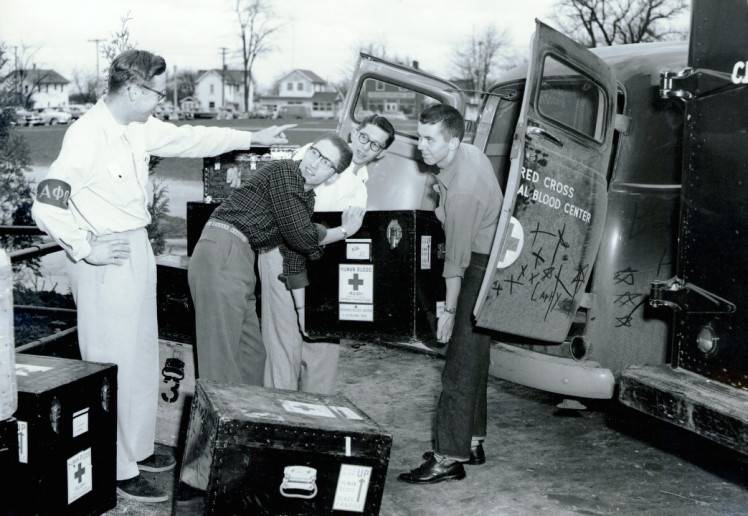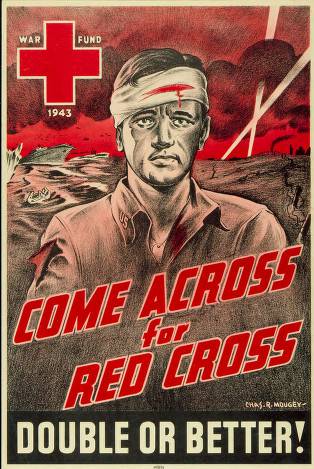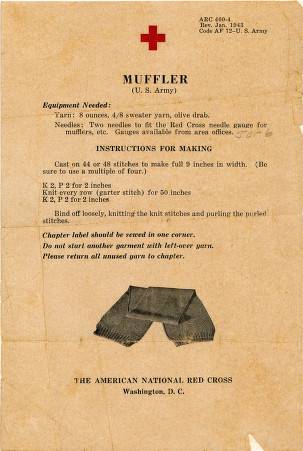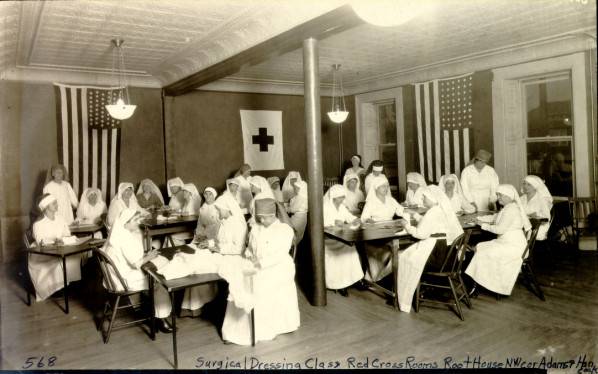Come Across for Red Cross!

In addition to Women’s History Month, March is also National Red Cross Month, a designation it has held each year since President Roosevelt’s first proclamation in 1943 in the midst of World War II.
The American Red Cross was founded in 1881 by the legendary humanitarian Clara Barton, who learned of theInternational Committee of the Red Cross during time she spent in Europe. The organization was officially chartered by Congress in 1900 as a volunteer-led relief agency, and over the past century and a half the iconic symbol has come to represent compassion, assistance and neutrality around the world. While their domestic disaster relief efforts are perhaps their best-known service, Redcross.org identifies five other areas in which the organization operates:
 locally-based community service for those in need
locally-based community service for those in need- support for military members and their families
- collection and distribution of blood through community drives and donation centers
- health and safety programming, such as CPR courses
- international programs for humanitarian relief and development
Since its inception in 1900, and the founding of a number of local Ohio chapters in the early part of the 19th century, the Red Cross has had an important and illustrious history around the state. Ohio native William Howard Taft, who at the time was President Teddy Roosevelt’s Secretary of War, was actually key in starting the local Cincinnati chapter in 1905–the same year that wealthy Cleveland philanthropist Samuel Mather helped bring the organization to his community. And almost 100 years ago, when the 1913 flood devastated Ohio residents in the the Great Miami and Scioto River Valleys in what is still the greatest natural disaster in the state’s history, volunteer workers worked tirelessly to bring relief to affected citizens and communities.
Shortly thereafter,national membership in the Red Cross grew from around 17, 000 people before World War I to 20 million after America’s entry into the war. Volunteer programs included making bandages to send overseas, training nurses, and raising money for refugees. Ohio was no exception to this explosion of volunteers, as we can see in the image below, showing a group of women in a surgical dressing class in Sandusky, ca. 1918. Red Cross parades were also a common sight, drumming up donations for fund drives and demonstrating support for military members and foreign Red Cross workers alike.
Ohio Red Cross volunteer war efforts continued throughout later conflicts including World War II, the Korean War, the Vietnam War, and the Persian Gulf War, in addition to continued relief efforts for domestic and international disasters, community supports and blood donations.

Some other highlights from Ohio’s historical involvement with the Red Cross include:
- the first-ever Red Cross National Convention, which was held at the state fairgrounds in Columbus in October 1921
- the Red Cross War Chest campaign, headed by William Cooper Procter, grandson of Procter & Gamble’s founder
- military service training school for Red Cross nurses at Camp Sherman, in Chillicothe
- relief efforts during the “Blizzard of ’78” and the 1974 Xenia tornado
- tens of thousands of Ohioans enrolled annually in life-saving Red Cross programs to learn CPR and first aid
We invite you to explore Ohio Memory materials related to the Red Cross for yourself.
For more information on the organization, visit Redcross.org, or view a list of all of Ohio’s Red Cross chapters here–visit your local chapter’s website to learn more about their history in your own community!
Thanks to Lily Birkhimer, Digital Projects Coordinator at the Ohio History Connection, for this week’s post!




Leave a Reply
You must be logged in to post a comment.